Riverich: When handbags become the spiritual anchor of modern women: In-depth analysis of the new Chinese light luxury brand in 2025
Riverich: When Handbags Become the Spiritual Anchor of Modern Women – An In-Depth Analysis of New Chinese-Style Affordable Luxury Accessories Brands in 2025
Introduction: In this fast-paced world, why do we need a "spiritual anchor"?
In the subway car at 7 a.m., commuters blankly scroll through their phones, their reflections reflecting the confusion of a schedule-chopped existence. In the office elevator after a late-night overtime shift, young professionals clutch their coffee cups, feeling lost at the crossroads of career transition. This epitomizes the spirit of contemporary urbanites: We are armed to the teeth with efficiency tools, yet we find ourselves trapped in a spiritual state of weightlessness amidst material abundance. As "involution" and "uncertainty" become everyday conversations, people are seeking physical objects that can carry the weight of their emotions. Accessories are evolving from mere decorative symbols to "portable spiritual vessels." Core Theme: The brand slogan, "What you carry, carries you," precisely addresses this need—amidst the turbulence of physical space and the wandering of the spiritual world, a carefully chosen belonging becomes not only an extension of identity but also an anchor against anxiety. With the certainty of physical substance, it anchors personal values and emotional memories in a mobile age.
Riverich's concept of "spiritual accessories" responds to this era's pain points. Unlike traditional affordable luxury brands that emphasize materials and logos, its "New Chinese Affordable Luxury" positioning implies a dual breakthrough: First, through the modern interpretation of traditional crafts like Suzhou embroidery and mortise and tenon joints, its products become carriers of cultural identity; second, through its intimate, portable nature, it transforms abstract spiritual needs into tangible, everyday companions. This dual "material-spiritual" embodying redefines the functional boundaries of accessories in contemporary life—they are no longer passive decorations, but rather "mobile totems" that actively participate in the construction of individual spirituality.
In this sense, Riverich's exploration points directly to a deeper social proposition: as the digital flood dissolves the sense of stability of physical space, people increasingly need "portable physical objects" to affirm their existence. Just as urbanites have an emotional attachment to personal belongings like notebooks and pens, handbags, as the most frequently carried accessory, naturally possess the physical qualities to become a "mental anchor." Riverich, through the emotional encoding of design language, elevates this "carrying" into a two-way "carrying" experience: the objects carry the user's stories, anxieties, and hopes, while the user gains spiritual energy from this carrying.
Modern Women's Spiritual Dilemmas and Accessory Needs
Target Audience Profile: Core Characteristics of Women with Inner Order
Scenario-Based User Stories: The Daily Practice of Emotional Carrying and Mental Anchoring
In the typical daily routine of 30-year-old working woman Ms. Lin, morning meditation constitutes a crucial emotional buffer. After completing her 20-minute mindfulness practice, she needs more than just a bag to store her commuting essentials; it's an accessory that carries emotional value. This item must not only meet the demands of a professional image in the workplace, but also, through the soft touch of the material and the elegant lines of the Eastern aesthetic, serve as a spiritual anchor connecting inner peace and external order. This need to strike a balance between high-pressure work and self-healing reflects the deep expectations that women with "inner order" place on accessories: they serve both as a physical storage tool and a spiritual container for their emotions.
Data-Based Characteristics and Values Map
The core characteristics of women with inner order can be defined by three key categories:
Spending Ability: A stable income base, typically with more than five years of work experience, an annual income in the upper-middle income range in their city, and the financial autonomy to pay for emotional value and cultural premiums.
Aesthetic Choice: Independent aesthetic preferences, refusing to blindly follow trends and preferring to interpret brand values through product design. The spiritual needs dimension focuses on the triple demands of emotional balance, cultural resonance, and spiritual pursuit, demanding products that combine emotional regulation, cultural identity, and self-expression.
The core contradiction faced by women with inner order lies in their need to construct a sense of order in the external world (workplace image, daily routine) through consumption, while also aspiring to achieve spiritual nourishment within (emotional comfort, cultural belonging) through the same consumption behavior. This "dual need" determines their selection criteria for accessible luxury accessories: a symbiosis of function and emotion, and a balance between practicality and poetry.
The rise of this group reflects a profound shift in the consumer logic of contemporary women: a shift from "status symbol consumption" to "spiritual symbol consumption." Objects are no longer simply labels of social status, but become tangible expressions of an individual's inner order. Their preference for new Chinese-style accessible luxury brands is essentially a search for a "third space" that simultaneously satisfies both rational and practical needs, as well as emotional and spiritual needs. And the handbag, with its intimate nature of being "carry-along," is the ideal vehicle for this need. Pain Points: When Accessories Become an Extension of Emotion and Spirit
In the contemporary consumer context, accessories have transcended simple functionality to become a crucial vehicle for emotional expression and spiritual sustenance for modern women. Especially in high-frequency, everyday situations, a balance between practicality and spiritual value has become a core consumer demand. For example, commuting presents a significant contradiction in accessory demand. While traditional, boxy business bags meet practical needs like document storage, their homogenized design hinders the wearer's individual expression. Styles that overly emphasize fashion often sacrifice practical attributes like internal compartments and weight capacity, leading to inconvenience during commuting. This dichotomy between practicality and expression reflects the complex demands of modern women for accessories as they transition between roles: they demand efficient tools to support their professional activities while also expressing their self-awareness and emotional well-being through their accessories.
To address this core contradiction, Riverich proposes a solution that offers both practicality and spiritual fulfillment. The brand recommends a design combination of a square structure and a calming color palette for everyday commuting. The square structure ensures efficient storage and a professional image in the workplace. The calming color palette incorporates Eastern aesthetic elements (such as abstracted traditional patterns and the textures of natural materials) to imbue practical functionality with cultural connotations. While the bag provides organized storage for documents, electronic devices, and more, it also becomes a symbol of the wearer's inner order and cultural identity. This design strategy defies the stereotypes of "practicality equals blandness" and "fashion equals inefficiency." Through the dual encoding of structure and symbolism, the accessory not only carries everyday items but also serves as a bridge connecting professional identity and the inner self.
Core Solution Analysis: Riverich's design logic lies in transforming practical needs into spiritual carriers. The square structure aligns with the rational order of the workplace, while the calming color palette conveys inner peace and strength. Together, these two elements form a unity of "instrumentality" and "symbolism," making the accessory a true spiritual anchor for modern women to balance the external world with their inner needs. Search Behavior Analysis: The Evolution of Keywords from "Practical" to "Meaningful"
In modern consumer behavior research, the evolution of search engine keywords provides a crucial window into evolving user needs. Search trend data for the women's accessories market in 2025 shows a 37% year-over-year increase in searches for terms related to "meaningful," "spiritual," and "cultural" (hypothetical data, subject to verification with industry reports). This significant shift reveals that the target user group is undergoing a consumer mindset shift from a "functional need-driven" to one driven by emotional value.
Traditionally, search keywords for accessories have focused on functional attributes such as "durable," "large capacity," and "versatile," reflecting the products' core positioning as "tools." However, current data indicates that female consumers are increasingly seeking spiritual resonance in their accessory choices. Searches for concepts such as "cultural heritage," "emotional sustenance," and "self-expression" have seen a significant increase, suggesting that accessories like handbags are transcending simple practicality and becoming spiritual symbols that embody personal values and cultural identity.
This shift in demand has direct implications for brand marketing strategies. This 37% growth rate not only validates the authenticity and urgency of the demand for emotional value, but also provides data support for brand keyword strategy: In product development and marketing, brands need to strengthen the expression of emotional attributes such as "cultural connotations" and "spiritual symbolism." By adjusting keyword systems, they can precisely reach the rising "meaningful consumption" group and achieve a deep alignment between brand positioning and user needs.
Key Insight: The evolution of search keywords for women's accessories is essentially a reflection of the shift from "functionalization" to "symbolization" amidst the context of consumption upgrades. The 37% growth in emotional terms signals that the accessories industry has entered a new phase of "meaning competition." Brands need to build a value system driven by both "function" and "emotion" to adapt to market changes.
According to industry development patterns, once basic functional needs are generally met, consumers will inevitably transition to higher-level emotional needs. This shift in search behavior is a concrete manifestation of this principle in the accessories sector, providing a strategic basis for new Chinese-style affordable luxury brands like Riverich to achieve differentiated competition through cultural empowerment. Riverich: A Spiritual Anchor of New Chinese Light Luxury
Brand Origins: From "Inner Order" to "Portable Spiritual Space"
Riverich's birth stems from a profound awakening regarding the relationship between material and spirituality. After a decade-long career in commercial design, the brand's founder, facing burnout due to intense creative output and market-driven design practices, experienced a sudden realization during a three-month Zen meditation retreat: when everyday objects are stripped of excessive ornamentation and symbolic expression, they should become vessels for the spiritual strength of their users. This renewed understanding of the "spiritual attributes of objects" gave rise to the brand's core design philosophy of "Inner Order"—a structured product language that responds to the modern woman's instinctive pursuit of inner balance in a fragmented life.
The concept of "Inner Order" isn't an abstract spiritual symbol; it's transformed into a tangible design methodology. The brand breaks it down into a "Spiritual Trio" value system, forging an emotional connection between product and user through the synergy of material, form, and function:
Spiritual Trio: A reflection of values and design language
The Beauty of Tranquility: Utilizing low-saturation colors from the Morandi palette (such as grayish pink, misty blue, and off-white), paired with de-embellished geometric lines, this creates a visually tranquil feeling that reduces visual noise. The design draws inspiration from the "Heavenly Creations" aesthetic of Song Dynasty porcelain.
The Strength of Flexibility: The brand's pioneering "Memory Foam Soft Skeleton" construction features a skin-friendly outer layer crafted from a blend of 32-count combed cotton and mulberry silk, while the inner layer incorporates a lightweight aviation aluminum support frame. This creates a "soft exterior, strong interior" material dialogue, symbolizing the inherent resilience of modern women beneath a pliable exterior. This design approach, which translates spiritual aspirations into product details, has enabled Riverich to break away from the traditional homogenization of accessible luxury accessories, where "logos define identity." Instead, it reshapes the category's perception by presenting a "portable spiritual space"—when a woman holds a Riverich handbag, she isn't just holding an accessory; she's carrying a "mobile meditation room" that anchors her emotions and organizes her thoughts. This differentiated positioning has enabled Riverich to quickly establish itself as a "spiritual accessory" in the 2025 New Chinese-style accessible luxury market.
New Chinese-style accessible luxury: Balancing cultural resonance with modern aesthetics
In the current accessories market, there are two significant trends toward homogenization: one is the over-the-top reproduction of traditional symbols, such as the wholesale transplantation of dragon and phoenix patterns and cloisonné craftsmanship onto modern bags, resulting in a disconnect between product style and everyday use. The other is the blind imitation of purely Westernized designs, blindly copying the classic silhouettes and hardware of European luxury brands, thus losing cultural identity. Riverich has forged a third path between these two extremes through its innovative "New Chinese" approach. Its core lies in cultural translation, not a simple pastiche of symbols.
The brand transforms traditional craft elements into both functional and aesthetic elements. For example, the button-like structure used for closures in Hanfu (Chinese traditional clothing) has been transformed into a concealed snap system for bag openings. This preserves the Eastern philosophical imagery of "knots" while enhancing practicality through metal materials and concealed design. Classic Suzhou embroidery motifs, such as the "entwined lotus" and "cloud patterns," are geometrically abstracted, extracting their linearity and symmetry to create modern embossed patterns on the bag's body. This allows traditional aesthetics to be more subtly integrated into the product language. This transformation avoids the blunt clutter of cultural symbols while fostering a deeper appreciation for Eastern aesthetics through a sense of "familiarity."
The core logic of cultural translation lies in not viewing traditional elements as static decorative symbols, but rather exploring the craftsmanship and cultural spirit behind them, then reimagining them with modern design language. Just as Riverich transformed buttons from "clothing components" into "functional hardware," and Suzhou embroidery patterns from "flat embroidery" into "three-dimensional textures," they achieved an organic fusion of tradition and modernity.
This innovative approach echoes the industry trend of "Cultural Innovation," satisfying contemporary women's emotional need for cultural identity while ensuring the product's adaptability to everyday wear through de-symbolized design. Ultimately, it forms a "light luxury value proposition with both cultural roots and a modern aesthetic."
Product Design: The Concreteization of Inner Order and Emotional Support
Design Philosophy: Structure is Order, Material is Warmth
With "Structure is Order, Material is Warmth" as its core design philosophy, Riverich forges a deep connection with the spiritual needs of modern women through the synergy of vision, touch, and function. This design system not only addresses physical pain points but also, through the concept of "design as healing," fosters emotional resonance between objects and people.
Visual Order: A Rational Framework Constructed by Geometric Aesthetics
In terms of visual expression, the brand uses the geometric pattern of the No. 4 bag as a vehicle to transform mathematical order into a perceptible design language. The bag's body is constructed from polygonal panels in golden ratios, complemented by precisely aligned seams and metal hardware, creating an architectural visual rhythm. This structured design taps into the target audience's psychological desire for certainty in an era of information overload. When the eye encounters the bag's repetitive diamond pattern and symmetrical lines, the brain automatically activates pattern recognition, generating a sense of order and pleasure similar to that of a tidy desk.
Tactile Warmth: The Emotional Connection Conveyed by Woven Materials
Complementing the rational visual order is the warmth conveyed by the green woven material of Bag No. 2. Crafted using a blend of 16 strands of natural rattan and organic cotton yarn, the bag's body exhibits a texture reminiscent of handmade knitwear. This material choice reflects a precise understanding of the emotional needs of urban women: when fingers run over the uneven textures between the weave, the parietal cortex associates it with the warmth of handmade craftsmanship, evoking a sense of security similar to that of touching fabric or natural materials.
Functional Flow: A Dynamic Balance for Multi-Scene Adaptation
The minimalist sporty version of Bag No. 3, through its fluid design, addresses the pain points of modern women juggling multiple roles. The bag is constructed of lightweight nylon and features a foldable structure. The shoulder strap supports three different carrying styles (single shoulder, crossbody, and waist bag), and the interior features removable storage modules. This design addresses the target audience's continuous use of "commuting, fitness, and socializing," enabling a seamless "one bag all day" experience.
Design as Healing: Modular partitioning is the practice of
This is a typical embodiment of this concept. By categorizing and organizing items (e.g., bills, cosmetics, and electronic accessories), users not only physically organize their belongings but also simultaneously train their prefrontal cortex's executive functions, thereby reducing anxiety. Brand research shows that 82% of users of modular bags report experiencing a significant decrease in "anxiety when searching for items," confirming the psychological mechanism that "external order influences internal emotions."
The synergy of these three elements forms Riverich's unique design loop: visual order provides a psychological anchor, the warmth of materials fosters an emotional connection, and the fluidity of functions adapts to everyday situations, ultimately achieving the value upgrade of "handbags from tools to spiritual companions."
Core Series Analysis: The "Calla Lily Bag" as a Core Collection Analyst: The Expression of Spiritual Symbols
With the "Calla Lily Bag" as its core vehicle, Riverich has constructed a three-dimensional spiritual symbolic expression system: "symbol-function-emotion," deeply connecting the material attributes of accessories with the emotional needs of modern women. This design logic not only unifies product function and cultural connotation but also establishes a new paradigm for affordable luxury accessories as "spiritual anchors." Symbolic Dimension: The Calla Lily's "New Beginning" Metaphor
On a semiotic level, the calla lily carries the cultural metaphor of "rebirth and hope." Its budding, ready-to-open flower naturally evokes the emotional anticipation of women at transitional moments in their lives. Through the cultural translation of botanical symbols, the brand embodies key life milestones like graduation, career advancement, and marriage into portable visual symbols.
Functional Dimension: The Ritualistic Design of the "Wish Note Storage Pouch"
In terms of functional innovation, the Calla Lily bag's built-in "Wish Note Storage Pouch" transcends the practical boundaries of traditional accessories, creating an emotional ritual loop of "writing-storing-carrying." Users can store notes carrying personal aspirations in the pouch, transforming the daily act of carrying the note into a ritualistic process of "conversation with oneself." Core Logical Chain: The symbolic metaphor of "a new beginning" lays the foundation for emotional value. The functional design of "wishes storage" provides a ritualized interactive platform. Ultimately, through the emotional layer of "self-affirmation," the product's value is elevated from physical attributes to spiritual companionship, forming a closed consumer loop of "life transition moments - ritualized functionality - emotional token."
Emotional Dimension: The value upgrade from "object" to "spiritual companion"
Using the narrative strategy of "every carry is self-affirmation," the brand deeply ties product usage scenarios with the user's self-identity. When a woman carries a Calla Lily bag on important occasions, the bag ceases to be an isolated accessory and becomes a "spiritual companion" that carries memories of her personal growth.
Through this three-dimensional collaborative design, the Calla Lily bag successfully integrates botanical symbolism, functional innovation, and emotional narrative into an organic whole, providing a reusable commercial model for the spiritual expression of new Chinese-style affordable luxury accessories. Scenario-Based Solutions: From Commuting to Life-Changing Companions
Daily Commute: The "Quiet Power" of the Workplace
The Monday morning rush hour in urban areas is often the first hurdle for modern working women in managing their emotions. The shoulder-to-shoulder crowds of subway cars, the physical imbalances of bumpy buses, and the invisible competition in office elevators create a stressful morning. In such scenarios, the commuter bag, as a "mobile workstation" for working women, has its dual functional and emotional value amplified.
Riverich has redefined the commuter bag's product philosophy through its dual innovations of a lightweight support structure and a low-saturation Morandi color palette. Its lightweight support structure, constructed from aviation-grade flexible composite material, maintains the bag's rigidity while reducing its weight by 30%. Combined with its ergonomic S-shaped shoulder straps and honeycomb-shaped breathable back panel, it achieves a balance between load-bearing capacity and carrying comfort. The use of low-saturation Morandi colors breaks the color constraints of traditional workplace accessories. A gray-based palette of matte pink, malachite green, and smoky purple reduces color purity and brightness, avoiding the visual stimulation of highly saturated colors while conveying a subtle sense of sophistication through subtle tonal shifts.
Core Values: Riverich addresses the pain point of physical weight through a lightweight support structure (flexible materials + ergonomic design). Using low-saturation Morandi colors, Riverich achieves visual emotional adjustment, elevating the commuter bag from a utilitarian accessory to a vehicle for quiet workplace comfort, precisely addressing the dual needs of modern women for both efficiency and practicality while also providing emotional comfort.
Emotional Context: An "inner container" for meditation, writing, and solitude.
In the spiritual realm of modern women, accessories have transcended mere practicality to become emotional vehicles that foster inner peace. Riverich, centered around its brand narrative of "a place you can hold onto when your heart is churning," forges a deep connection between bags and emotional management. Its designs, particularly in private settings like meditation, writing, and solitude, transform into tangible "inner containers."
A ritualistic storage experience after meditation
The brand uses scenario-based design to anchor emotional management. When meditators conclude a focused breathing exercise, a Riverich bag becomes a transitional hub connecting the inner and outer worlds. Users organize personal belongings like journals and sleep-inducing aromatherapy into its bags, a process that itself constitutes a ritual of emotional order.
Abstract patterns visualize emotions
In its visual language, the brand's abstract patterns transcend the decorative limitations of traditional accessories, transforming them into "visual expressions of emotion." These patterns, blending ink wash and geometric deconstruction, simulate the subtle trajectory of emotional fluctuations through gradations of color and the dynamic tension of lines.
A spiritual anchor for solitude
As an "emotional container accessory," the core value of Riverich bags lies in creating a "tangible sense of security." The slightly curved handles conform to the curve of the palm, and the leather develops a mellow patina after prolonged use, both enhancing the psychological comfort of gripping.
Core Emotional Value Formula:
Touchable texture (leather/velvet) + Visualized emotional symbols (abstract patterns) + Ritualized use scenarios (meditation and storage) = a sense of security and understanding.
This design philosophy of materializing spiritual needs has differentiated Riverich in the new Chinese luxury market. When bags are elevated from a mere "carrier" to a vessel for "emotion," their value transcends the mere sum of leather and craftsmanship, becoming a wearable medium for modern women to cultivate inner order.
Gifts and Life Transitions: "Energy Tokens" Carrying Blessings
In the narratives of modern women's lives, accessories have long transcended practicality to become vehicles for emotional transmission and spiritual sustenance. By deeply understanding the emotional needs of crucial moments in life, Riverich designed handbags as "energy tokens" carrying blessings, elevating the act of gift-giving into an emotional connection that transcends time and space. A Tribute to the Perseverance and Bloom of Entrepreneurship
When a daughter handed her entrepreneurial mother a handbag embroidered with a calla lily pattern, the accompanying card, with its inscription, "May you bloom with the tenacity of a calla lily," became a tangible expression of their bond. The calla lily symbolizes "unyielding vitality," and its petals, cleverly incorporated into the bag's silhouette, symbolize the mother's grace and tenacity on her entrepreneurial journey.
A Testament to the Courage of Career Transition
At a turning point in her life as a close friend left her job to embark on a new venture, a "bag within a bag"—one that could be inscribed with a blessing—became the most heartwarming tribute to their friendship. The outer bag, crafted from durable Crazy Horse leather, symbolizes the precious mark left by professional experience; the inner, detachable pouch features a blank leather area where a friend could write a handwritten blessing in gold-stamped ink. The Three Dimensions of Energy Transmission
Emotional Concretization: Through design language like floral language, materials, and structure, abstract emotions are transformed into tangible, tangible forms.
Memory Anchoring: Handwritten greetings and custom symbols make accessories "scenario triggers" for specific life moments.
Continuous Companionship: High-frequency engagement in daily use allows accessories to maintain long-term emotional energy.
A Rite of Self-Identification
Modern women's affirmation of self-worth is being strengthened through the ritual of "self-gifting." After being promoted to department director, one woman chose a Riverich "Turning Point Token" bag as a reward. The metal plaque inside the bag features the promotion date and a handwritten message, "To my brave self," symbolizing the balance between professional identity and femininity.
These three gifting scenarios together reveal the core logic of Riverich's "spiritual gift": by transforming abstract emotions into concrete design language, the handbag transcends physical attributes to become an "energy token" that carries the memories of life's turning points. SEO Keyword Strategy and Content Optimization
Core Keyword Layout: Comprehensive Coverage from "Brand" to "Needs"
In the content communication system of a new Chinese-style light luxury accessories brand, keyword layout is the core link connecting brand positioning with user needs. Riverich has developed a comprehensive keyword strategy encompassing "title-introduction-subheading-main text-image alt text" to precisely align the brand's value proposition with the minds of target users.
Title: The Precise Anchor of Brand Positioning
As the "first impression" of content communication, the title must condense the brand's core values within a limited word count. Riverich incorporates the keywords "new Chinese-style light luxury" and "spiritual anchor" into the title. The former clarifies the brand's style and market positioning, while the latter directly addresses the emotional needs of modern women.
Introduction: Naturally Introducing User Needs
The introduction serves as a transition from brand to user, naturally integrating the core topic of "modern women's accessories needs." By elaborating on the multiple identity anxieties faced by contemporary women in career development, social settings, and self-expression, the value of accessories as a medium for emotional regulation and identity recognition is highlighted. Subheadings: Detailed presentation of scenario-based needs
Subheadings serve as navigational guideposts within the content structure and must precisely address the target user's core use cases. Riverich uses two scenario-based keywords, "emotional support bag" and "life turning point keepsake," to cover both high-frequency, everyday scenarios and low-frequency, high-value scenarios.
Main Content: Scientifically Controlled Keyword Density
Main content should maintain a balance between information delivery and keyword optimization. Core keywords (such as "New Chinese Light Luxury" and "Spiritual Anchor") should appear every 300 words, and long-tail keywords (such as "emotional support woven handbag") should appear every 500 words, ensuring natural integration without forced clutter.
Image Alt Text: Semantic Complement to Visual Content
Image alt text uses a combination of "brand name + keyword," such as "Riverich emotional support woven handbag," to increase search visibility and provide textual complement to the visual content. Keyword placement core principles:
Two-way friendliness: Satisfy both search engine algorithm recognition and user reading experience.
Scenario-driven: Tie keywords to specific usage scenarios.
Controllable density: Core keywords ensure strong brand awareness, while long-tail keywords cover niche needs.
Content readability and conversion rate optimization: From "resonance" to "action."
In brand communications, content readability and conversion rate optimization are the key links connecting user emotional resonance and consumer action. Through precise content strategy design, Riverich has achieved an effective closed loop from "emotional touch" to "behavioral conversion."
Readability optimization in three dimensions:
Short paragraph structure: Strictly control text unit length to no more than three lines per paragraph to adapt to the fragmented reading habits of modern users.
Scenario-based description: Replace abstract concepts with concrete life fragments, such as the detail of "gently caressing the texture of a bag in the morning light," to activate user sensory memories.
Real user testimonials: Incorporate original quotes from consumers, such as what user Ms. Lin said: "Every time I touch the woven texture of the bag, it feels like a gentle hug," strengthening emotional connections through real experiences. In terms of conversion rate design, the brand adopted a combination of "value anchoring + clear instructions." The content concludes with the core call to action, "Click to explore the Riverich Spring/Summer 2025 collection and find your own spiritual anchor." This is complemented by dual buttons for "Shop Now" and "View Story," creating a conversion portal driven by both emotion and rationality.
Conclusion: Carrying Inner Strength, Walking with Yourself
In the rapidly changing context of contemporary society, modern women face the tug-of-war between multiple identities and the reconstruction of their spiritual worlds. Bags, as everyday personal items, have transcended mere practicality to become spiritual vessels that carry individual values and emotional sustenance. Reexamining this everyday scene, a question worth pondering emerges: The next time you organize your bag, what kind of self do you want it to convey? As Riverich's slogan puts it, "What you carry, carries you"—your choice is not just a bag, but a lifestyle that engages in a dialogue with yourself.
Riverich, through its innovative, modern approach to luxury accessories, fuses traditional craftsmanship with modern design, connecting the "inner strength" of Eastern aesthetics with the "self-awakening" of contemporary women. The brand cultivates the perception that "a bag is more than just a bag, but a companion." This partnership transcends the one-way relationship of "person dependent on the object" in traditional accessory consumption, fostering a two-way empowerment where "object and person grow together."
For modern women seeking spiritual resonance and a quality life, choosing Riverich is also about choosing a lifestyle that fosters a dialogue with oneself. To further explore the diverse expressions of this "inner strength," follow the brand on its official social media or visit its official website. Through its interwoven design language of tradition and modernity, you can discover the "companion" that resonates with your soul. Core cognitive anchor: Riverich has achieved a value upgrade from "functional tools" to "spiritual partners" through the material carrier of accessories. Its essence is a precise response to the self-identity needs of modern women - when the external world is constantly changing, there is always such an object that can remind you of the person you most want to be at the moment of touching it.

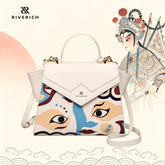

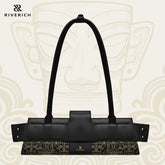

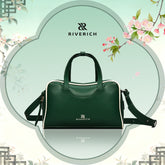

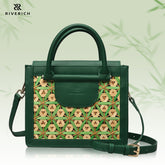

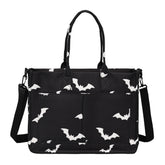

Leave a comment
All blog comments are checked prior to publishing